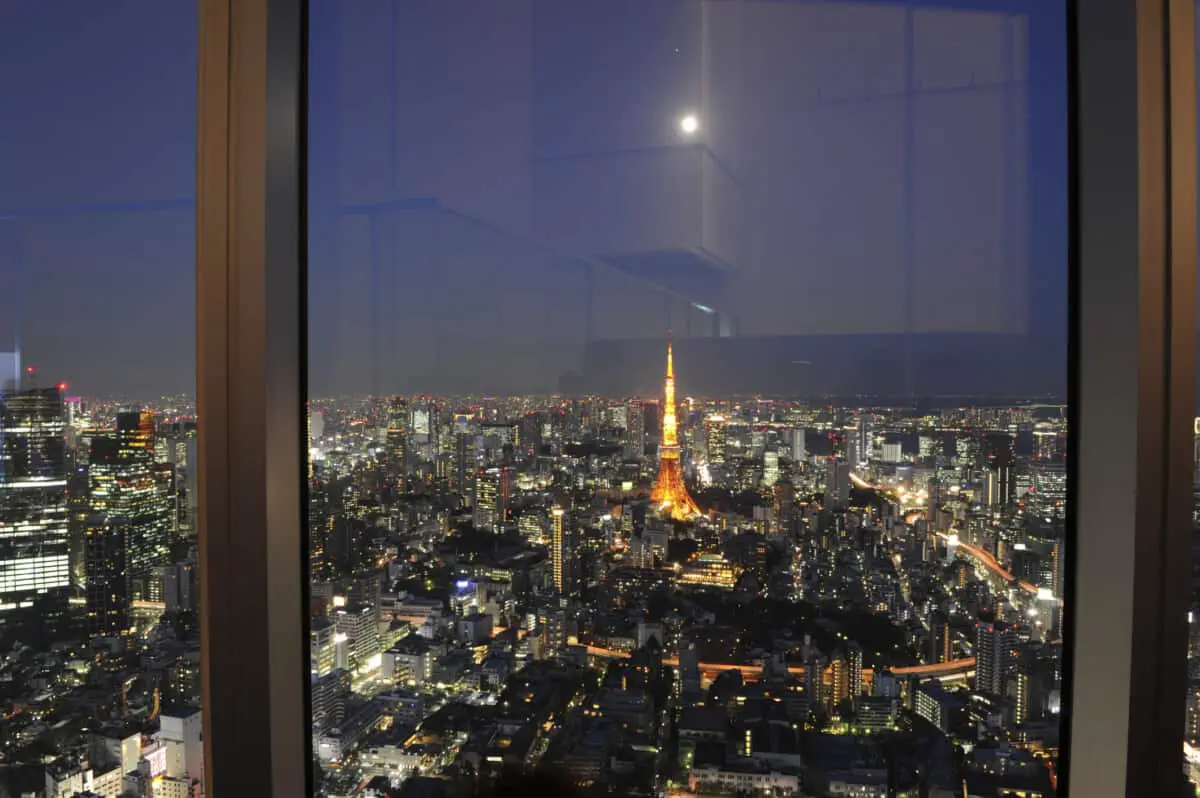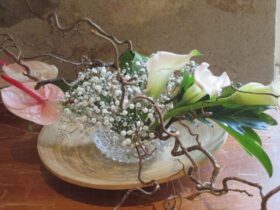The difference between Tokyo night and day is incredible. Seen after dark Tokyo shimmers like a dazzling jewel. Twinkling gold, silver, green, blue and yellow lights expand across the horizon.
Taking advantage of Tokyo’s night scenery is one that shouldn’t be missed. There is much to do during the day but at night a new city emerges.
Listed below are some of the city’s most incredible scenes to take in once the sun sets on the city horizon.
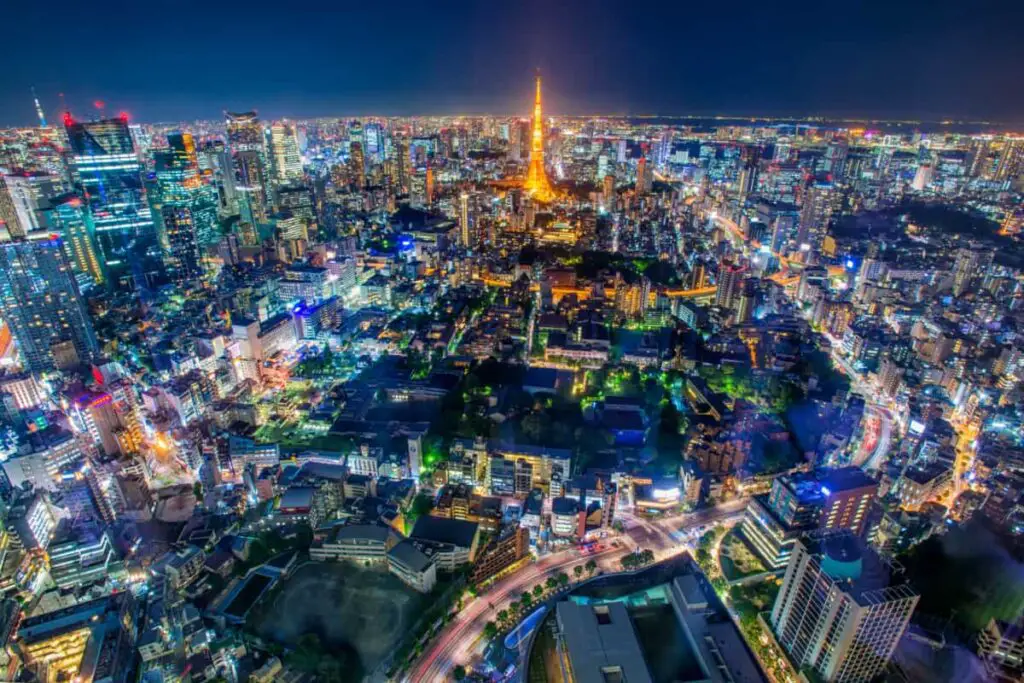
Tokyo By Helicopter
Several separate companies offer helicopter tours over Tokyo. Times for these incredible sightseeing tours range from 10 minutes to over an hour. Prices are based upon time and begin at around $300 USD and max out at around $5000+ USD for the longest tours.
Some of the common rules for helicopter charters are to make sure all photographic equipment flashes are off for pilot safety. Weather commonly affects flight schedules and is canceled during inclement weather.
Check-in times before flights are at least 30 minutes prior to the regularly scheduled departure time. Flight times may be flexible but check with each charter service before as some run on strict timetables.
Occasionally flights can be canceled due to unexpected maintenance and safety checks which are done periodically and if unexpected mechanical issues arise.
Depending on the craft there is usually a 5 or 6 person maximum capacity and weight limits may apply. For example, adults with small children may allow an extra passenger whereas a group of five adults at a normal weight will prohibit a sixth passenger.
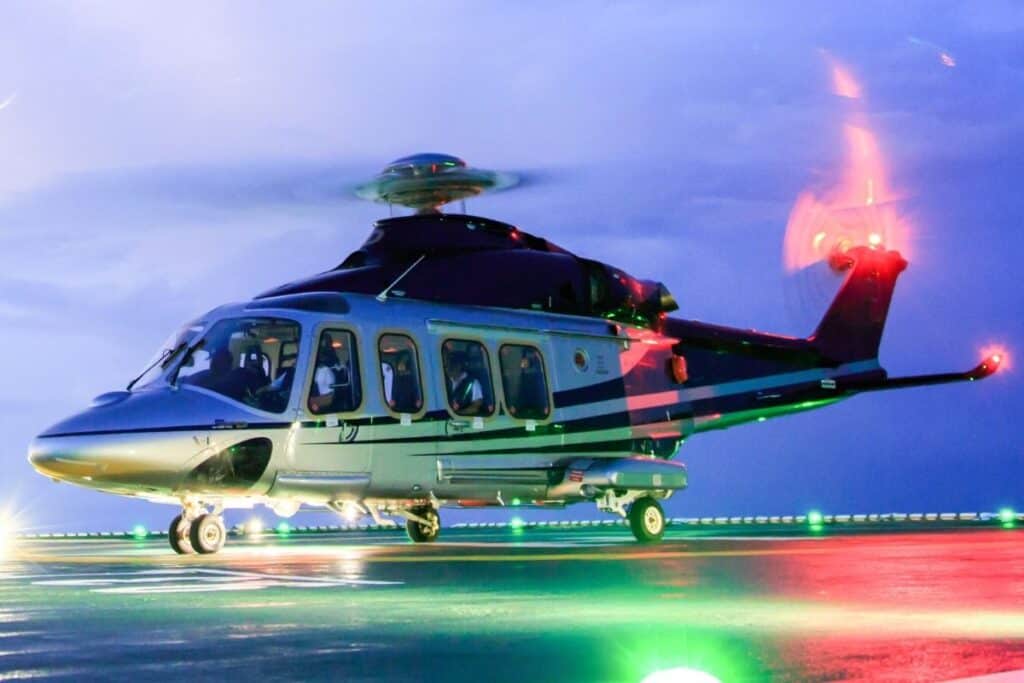
Camera equipment is strictly controlled based on size and safety issues. However, smartphones are allowed as long as flashes are off and no usual equipment is brought on board.
One of the more interesting tours is flights near Mount Fuji. These charters are quite a lot more than the city flyovers as they are longer flights. Expect to pay several thousand dollars for these excursions.
Note that the Mount fuji tours can’t guarantee that fuji even on the best days can be obscured by clouds. Night tours over the city are usually the best option as the city lights during most of the year are spectacular.
Tokyo Tours By Helicopter (TripAdvisor)
Dinner Night River Cruise Tokyo
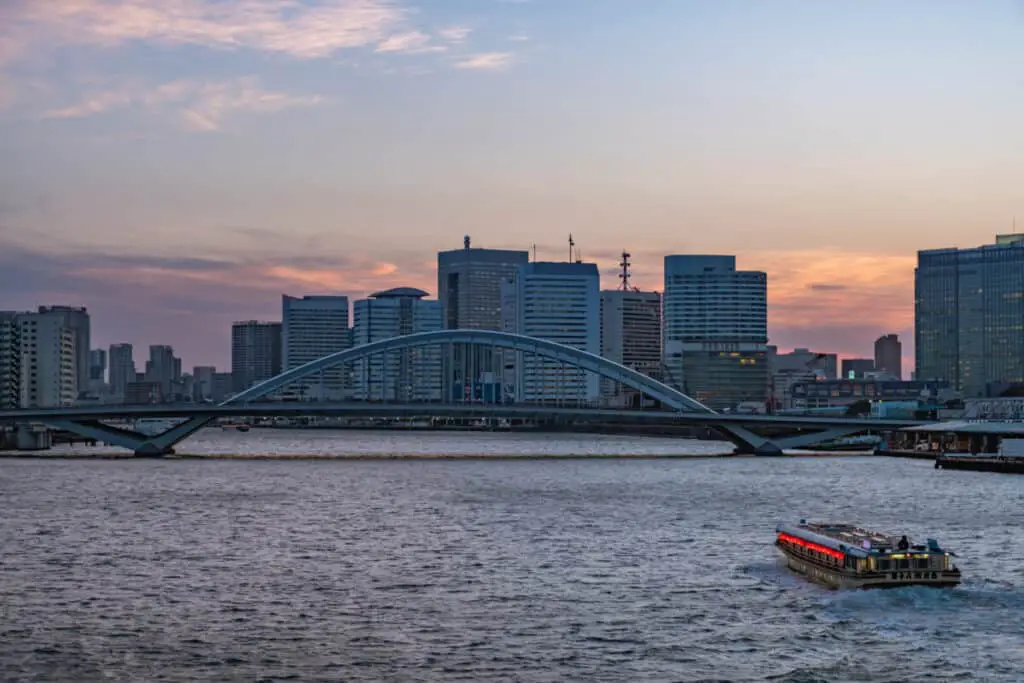
What could be better than a relaxing cruise on the rivers surrounding Tokyo? These dinner and sightseeing cruises allow guests to enjoy a great meal while seeing some of Tokyo’s most iconic landmarks.
On a leisurely cruise, avoid the congestion of central Tokyo and take in the evening vistas of such sites as the Rainbow Bridge, Sky Tree, and Tokyo Tower. Dinner, snacks, and endless beverages are included in the excursion.
Dinner cruises depart from Harumi Pier at 7 pm and the total time for each trip is 2.5 hours. There is a 10 minute stop at rainbow bridge for sightseeing. An excellent time to book a trip is during planned fireworks festivals.
- Odaiba Rainbow Winter Fireworks (December)
- Sumida River Fireworks Festival (July)
- Adachi Fireworks Festival (July)
- Katsushika Noryo Fireworks Festival (July)
- Edogawa Fireworks Festival (August)
- Itabashi Fireworks Festival (August)
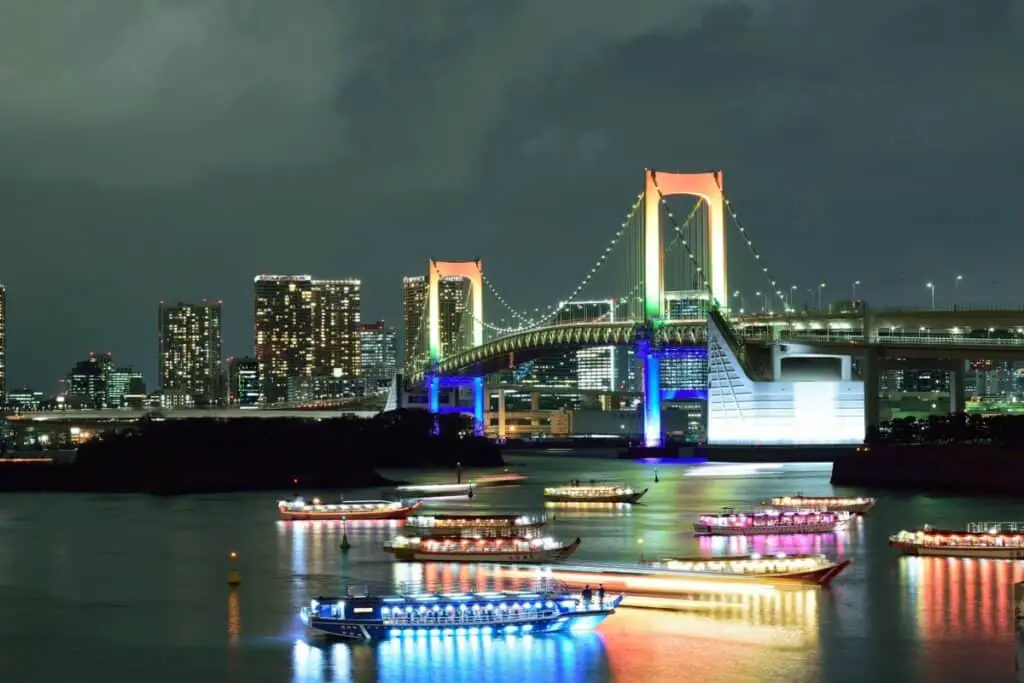
Some cruise services will have a minimum number of passengers or the cruise will generally be canceled. Prices per adult start at $125 USD per person.
Some boats do offer observation decks which are probably one of the highlights of cruising Tokyo’s rivers as it provides an open-air platform for viewing Tokyo and its riverfront neighborhoods.
Dining rooms are enclosed and climate-controlled. Yakatabune for example runs about 8 separate boats and reservations are open to as little as two persons and a maximum of fifteen.
Skytree
One of the best views of Tokyo is seen from the Tembo or Galleria’s observation decks at Skytree. Night views are often perfect from both observation decks.
Note that clouds, fog, or rain can often make city views from Skytree less than ideal. Plan your visit accordingly as the weather can make your visit less than what you expected.
Tokyo Weather via (The Weather Channel)
From 8 a.m. until 10 p.m., the Observation Decks are open. The TOKYO SKYTREE Tembo Deck’s last admission is at 9 p.m., and the TOKYO SKYTREE Tembo Galleria’s final admission is at 9:20 p.m.
Tokyo Skytree Official Website
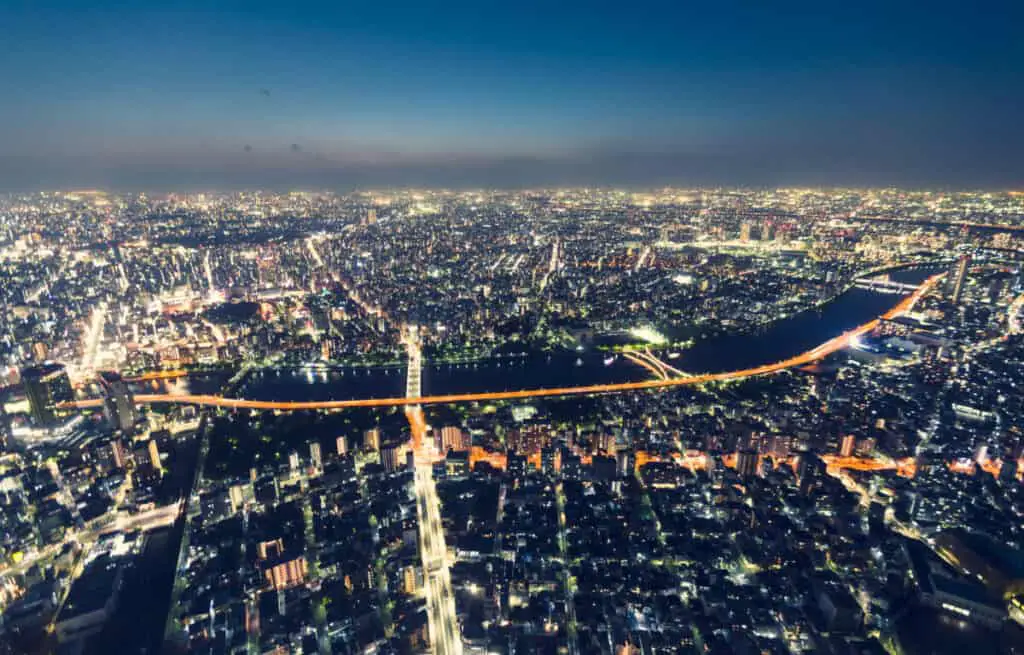
In addition to the two viewing platforms, Skytree has an incredible restaurant that has impeccable foods and comes with the same views that are present on the observation decks.
Teppan or French cuisines are offered. Prices range from $100 to $300 depending on the course and time of day. No children are permitted during dining hours. Reservations are usually made far in advance so even before your departure to Tokyo it is advised to make one at least a month out.
Asakusa Temple By Night
The Asakusa Temple is a Buddhist temple in Tokyo, Japan’s Asakusa neighborhood.
Senso-Ji is an old Buddhist temple in Tokyo’s Asakusa neighborhood. It is one of Tokyo’s oldest and most important temples. Previously linked with the Tendai Buddhist sect.
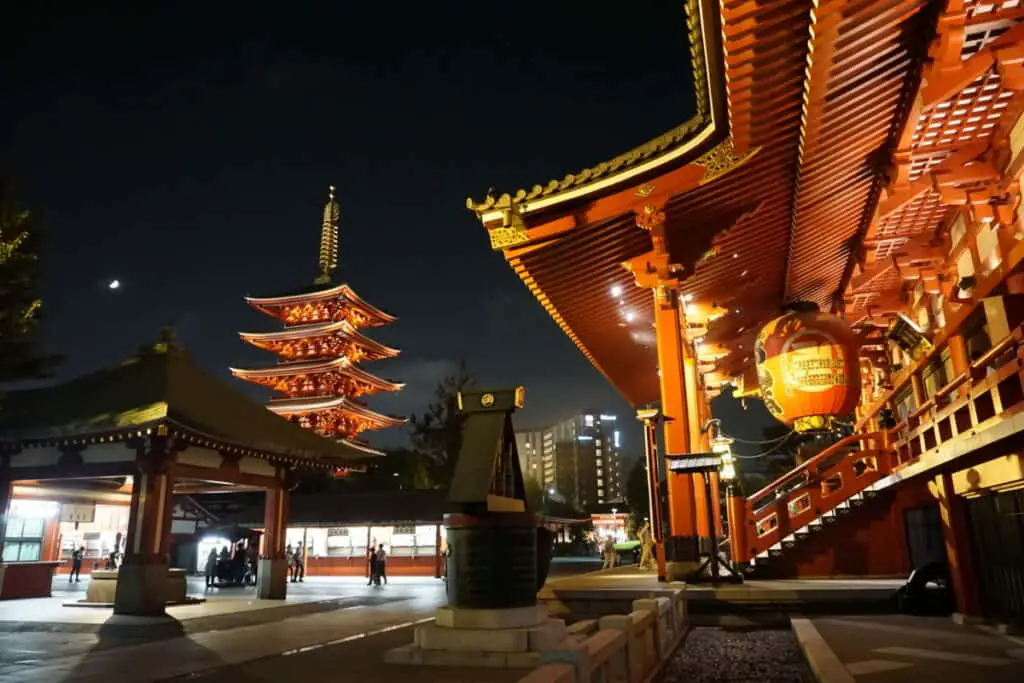
With over 30 million visits each year, the Sensoji Kannon temple is the most frequented spiritual destination in the world, devoted to Kannon Bosatsu, the Bodhisattva of Compassion.
The temple is dedicated to the three founders of Senso-ji. Asakusa Shrine is part of a wider complex of religious structures in the neighborhood. It is located on the Senso-east ji’s side, down a street identified by a huge stone torii gate.
During most days the area is swarming with tourists and Tokyoites alike. But after sunset, the crowds dissipate and the neighborhood takes on a quiet and reserved tone.
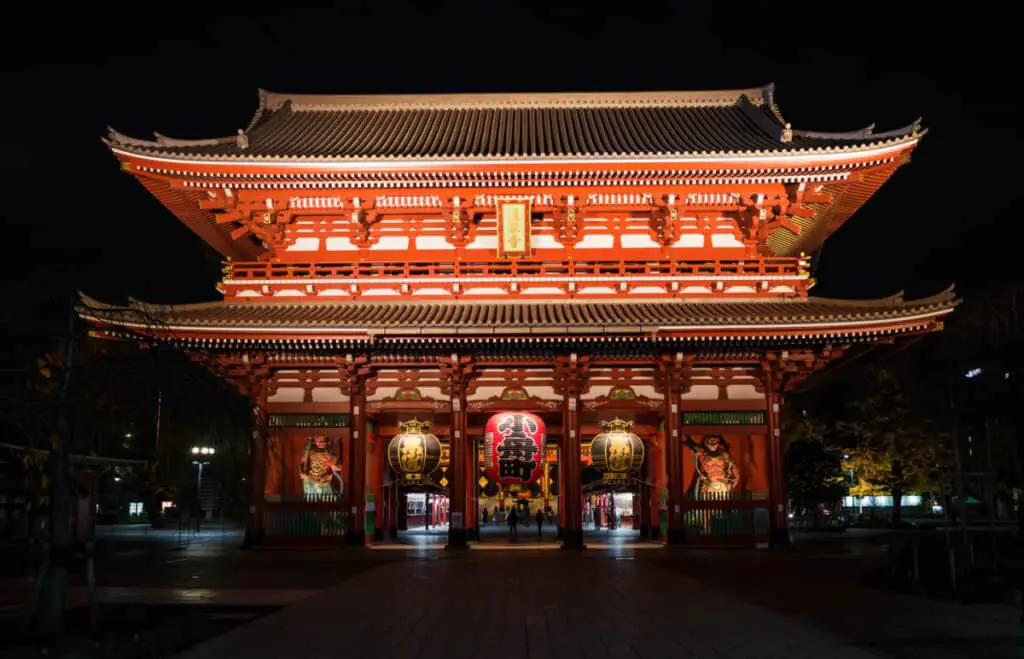
The night lighting and illumination around the temple bring the reddish vermilion painted buildings and the thunder gate into a whole other realm. The temple grounds are always open and so a late-night stroll and photo opportunities abound.
Senso Ji Shrine Official Website
Roppongi Hills Observatory
The Roppongi Hills Mori Tower’s Tokyo City View is an indoor observation deck. The observatory, which is located 820 feet above sea level, offers a panoramic view of Tokyo’s night skyline. Tokyo’s best open-air observatory is the rooftop outdoor Sky Deck, which is positioned 885 feet above sea level.
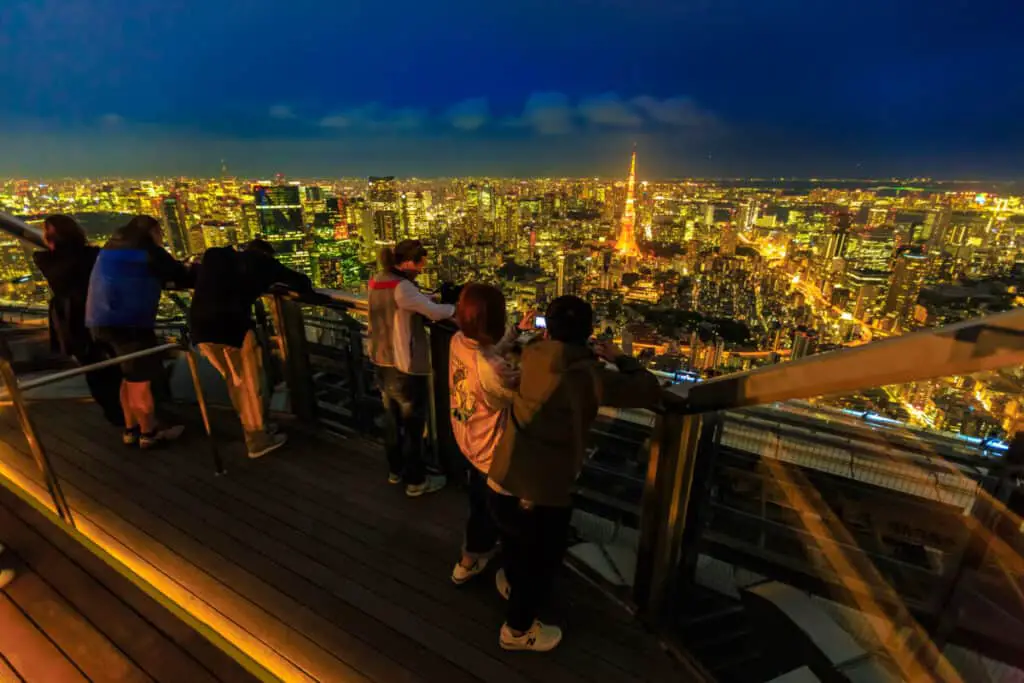
Tokyo’s Mori Tower offers Cityscape Views on the 52nd story and an open-air roof terrace on the 54th floor offers incredible panoramic views of the city.
The Mori Tower is largely an office skyscraper, although it also has retail shops, restaurants, and other attractions. On the 53rd floor, you’ll find the Mori Art Museum.
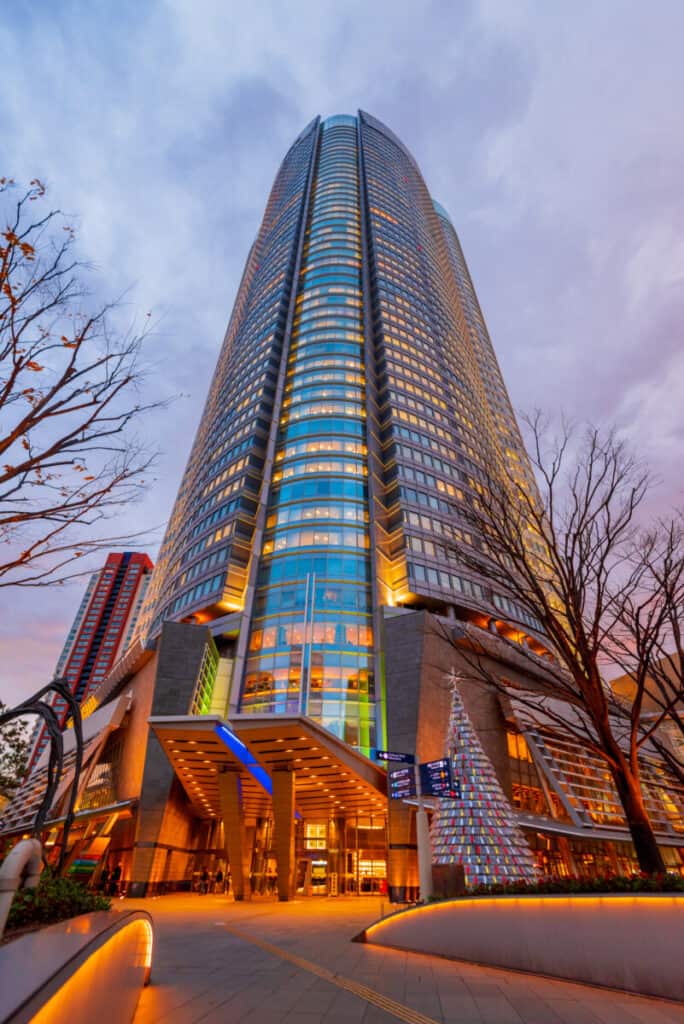
The indoor Observation Deck is open daily10 am to 8 pm (Last Admission: 7:30 pm)
Rooftop (Sky Deck) Observation Platform is open daily 11 am to 8 pm (Last Admission: 7:30)
The admission cost for the rooftop deck is considerably lower than the prices for the indoor observation area. If the weather is pleasant the best option is for SKY DECK. Prices are 500 Yen and the indoor viewing area is around 2000 Yen. Prices fluctuate on weekends and discounts for students, seniors, and children are given.
Advanced ticket purchases are recommended.
Mori Building Official Website
Tokyo Tower
Tokyo Towers’ top deck is enclosed but provides incredible views of the surrounding neighborhood. The tower does have open-aired platforms on lower levels and also provides stunning views.
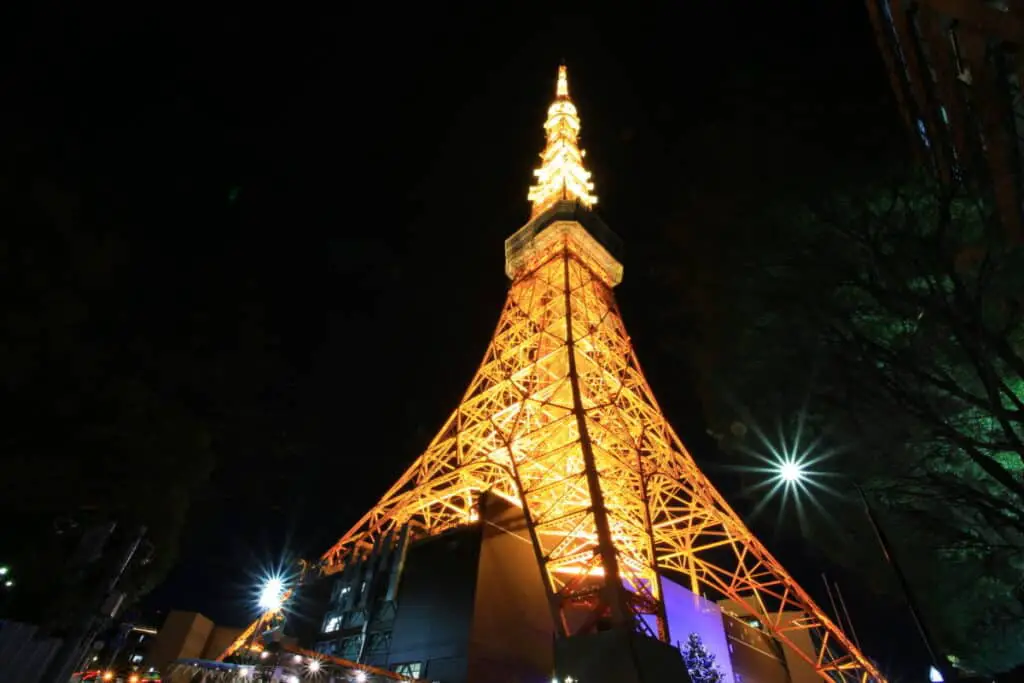
Tokyo Towers Top Deck Tour includes a hands-on experience of the unique Top Deck, which gives the impression of floating in the sky and was developed in the image of Tokyo’s Future and the Future of Observation Decks.
Top Deck Operating Hours between 09:00 and 10:15 pm (Top Deck visiting time ends at 10:45)
Prices for admission to the top deck range from 1400 Yen to 2800 Yen depending on age. Prices are slightly discounted online vs ticket counter rates.
Tokyo Metropolitan Government Building Observation Deck.
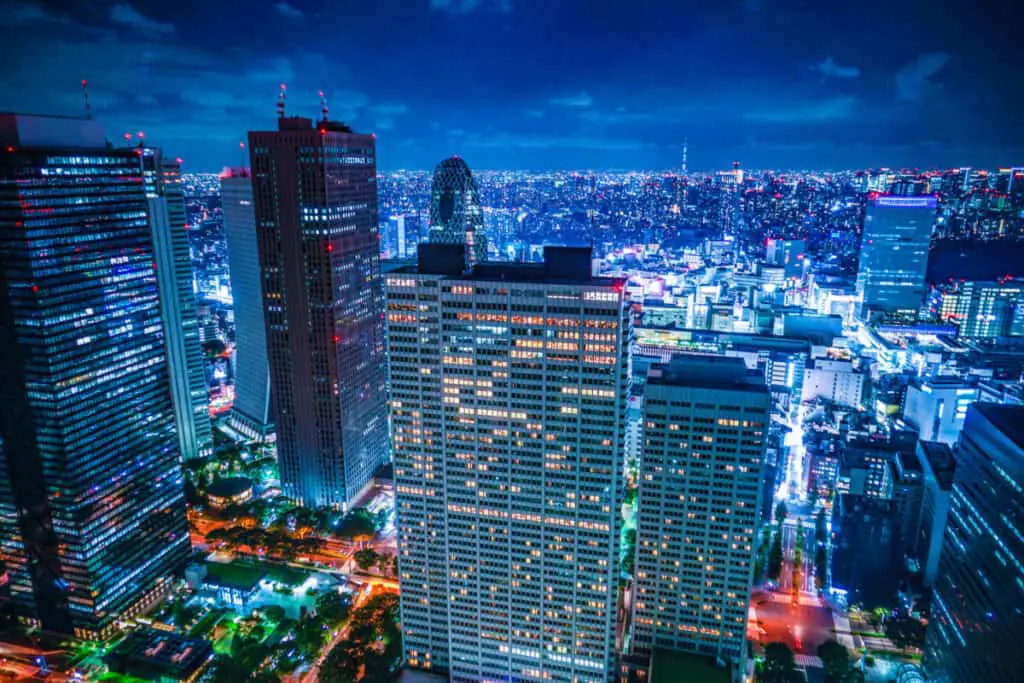
Located in Shinjuku, comprises a three-building complex, each of which takes up a city block. Tokyo Metropolitan Main Building one, the highest of the three, is a 48-story structure that separates into two components at the 33rd level.
The Tokyo Metropolitan Assembly Building, which has eight floors, and Tokyo Metropolitan Main Building two, which has 37 stories, are the other two buildings in the complex.
The public is welcome to visit (at no charge) the two panoramic observation decks, one in each tower on the 45th floor that includes gift shops and cafés. The observation decks are open from 9:30 a.m. to 11:00 p.m., however, the two decks are open on alternating days.
World Trade Center Tokyo Observatory
World Trade Center Tokyo, a member of the World Trade Centers Association, is housed in the structure. It mostly houses offices, although it also has retail shops and restaurants. A tourist observatory is located on the building’s top floor.
The Toei Subways’ Daimon Station and Hamamatsuch Station are connected to the building, which is served by two JR East lines and the Tokyo Monorail.
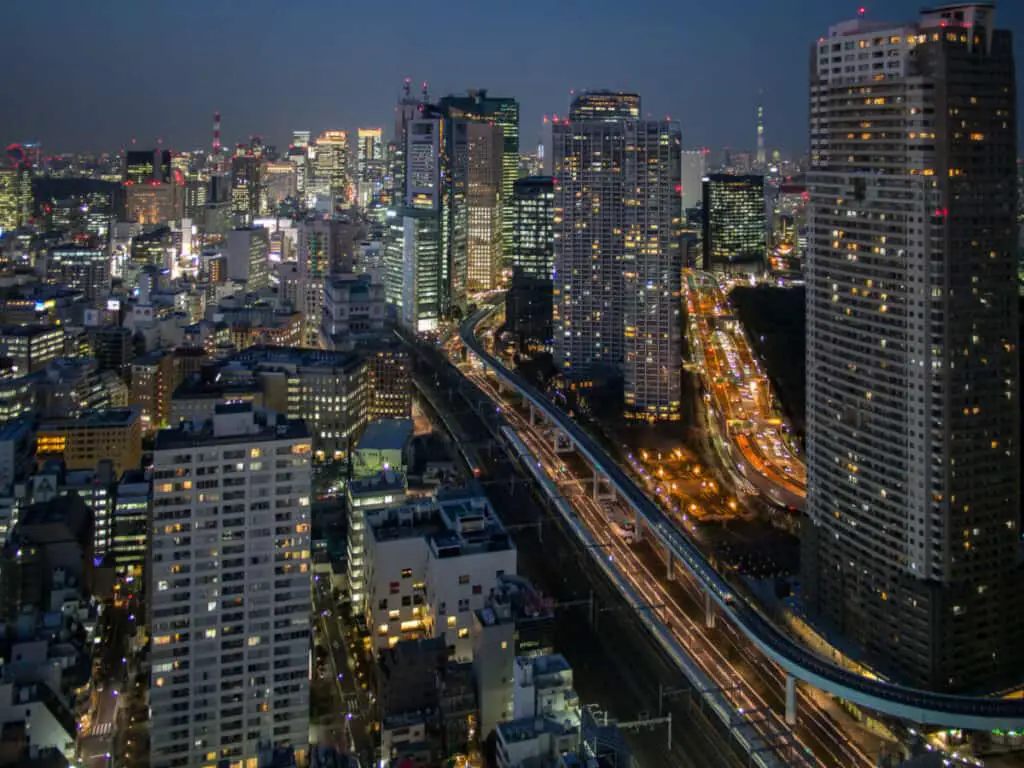
Shibuya Scramble Square Building
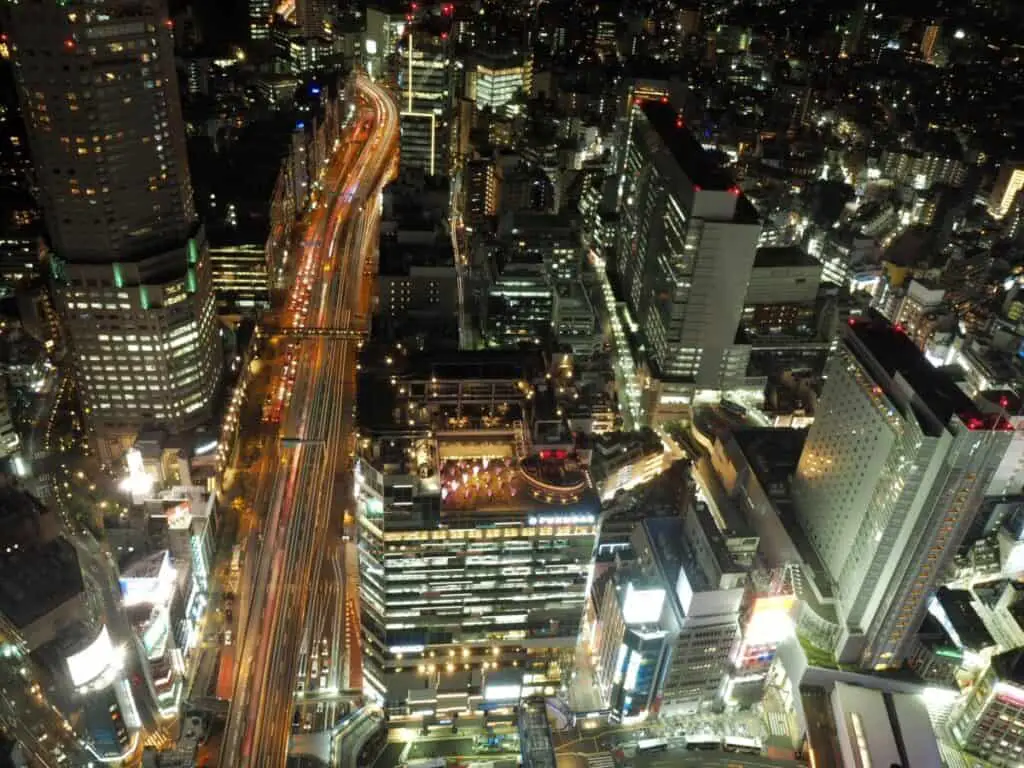
Shibuya Sky, an exclusive observation deck, occupies the 45th, and 46th levels of the Shibuya Scramble Square Building, and even the roof. You can look down on Shibuya’s iconic scramble crossing and across the vista to Tokyo Skytree and other sights.
Mount Fuji may also be seen when the weather is clear. The rooftop observation area is a glass-walled open-air area.
Shibuya Scramble Square Official Website
The best views are often outside of Japan’s rainy season (early June to mid-July) in the less humid fall, winter, and spring months. Views across Tokyo at any of these spots will provide an incredible experience and chance to take some of the best photos imaginable.

